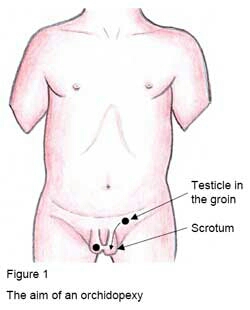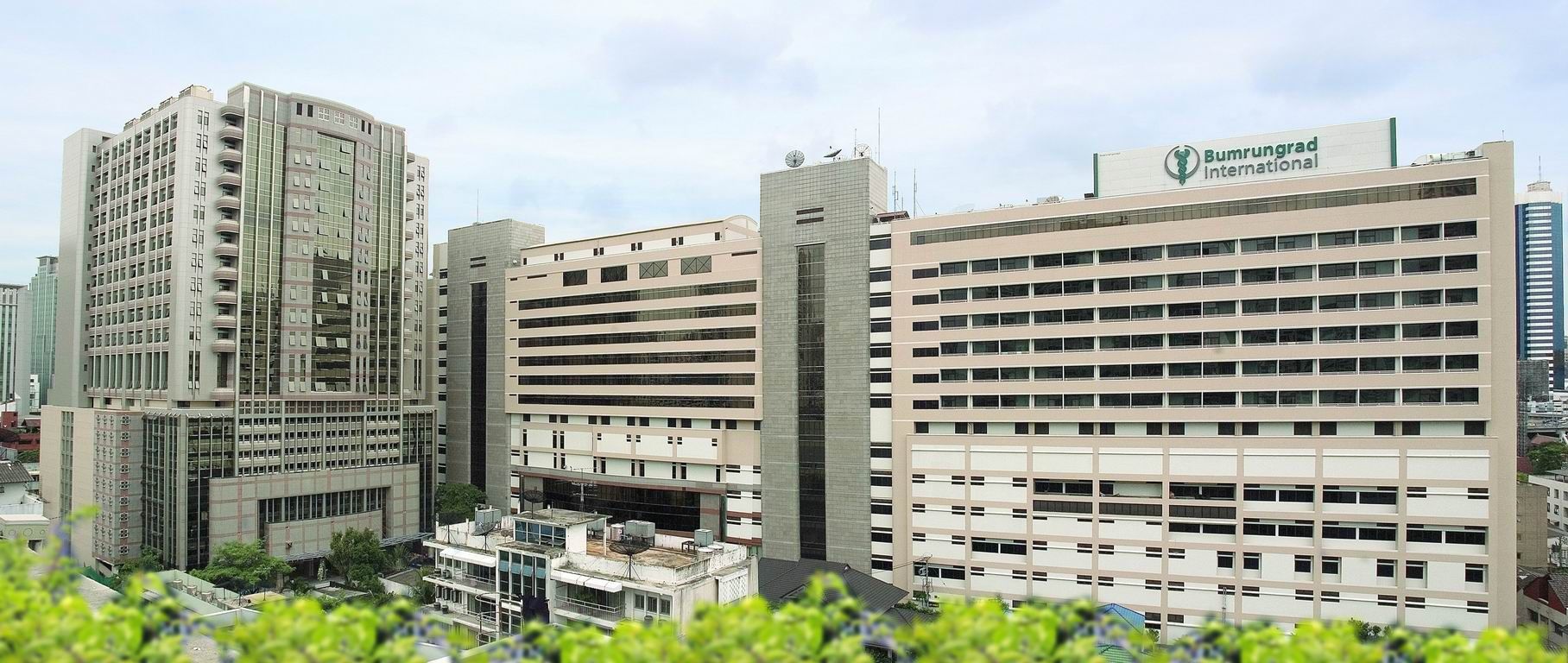Pediatrics
Orchidopexy for a palpable testicles Treatment
Orchidopexy
An orchidopexy is generally an operation which aims to bring a testicle down into the scrotum. The testicles produced in a baby boy's abdomen when he is in the womb of her mother. The testicles specifically move down into the scrotum after the duration of 35 weeks of pregnancy. Generally, a testicle does not come down normally on itself.
What is an orchidopexy?
An orchidopexy is generally an operation which aims to bring a testicle down into the scrotum. The testicles produced in a baby boy's abdomen when he is in the womb of her mother. The testicles specifically move down into the scrotum after the duration of 35 weeks of pregnancy. Generally, a testicle does not come down normally on itself.
What are the advantages of the surgery?
This Surgery basically prevent your child from developing serious complications. Your child’s fertility will also improve, and he will find it quite normal and easier when he turns into an adult in order to check his testicles to check for any further issues.
What are the symptoms observed?
Not observing or experiencing a testicle where you would generally expect it to be in the scrotum is the major symptom an undescended testicle. Testicles organised in the abdomen in fetal progress. After the terminating two months of normal fetal development, the testicles slowly descend from the abdomen by a tube-like passageway situated in the groin or the inguinal canal in the scrotum. By an undescended testicle, that procedure terminate or is delayed.
An undescended testicle is basically recognised your baby is examined shortly after his birth. If he has an undescended testicle, consult the doctor when he will properly need to be examined. If the testicle is not moved into the scrotum by the time he is around 4 or 5 months old, the issue mostly will not get sorted itself. From infants to pre-adolescent boys who have generally descended testicles at the time of birth can appear to be as a missing testicle later.
A retractile testicle, which moves backwards and in forth direction in between the scrotum and the groin and can be easily accessed by hand into the scrotum during a physical examination. This is not uncertain but caused by muscle reflex in the scrotum. An ascending testicle is basically an acquired and undescended testicle, that has geared back to the groin and cannot be properly managed by hand into the scrotum.
Orchidopexy for a palpable testicle (child)
Orchidopexy Procedure
In a child, if a testicle has not travelled to the scrotum by the age of 5 months, it is not possible to do so without surgery. The operation is performed by provision of general anaesthetic and generally takes 40 minutes to an hour for completing the surgery. Your surgeon will specifically perform the operation by making a precise cut on the groin and a tiny cut on the scrotum. They will liberate the testicle and will surely bring it down into the scrotum. If the surgeon discovers a small testicle that is probably not able to function, they will mostly remove it. Cryptorchidism mean "hidden" and orchis "testis" is basically the most common type of abnormality of male sexual production and development. In this type of condition, the testis are specifically located in the scrotum. It can result iectopic, properly descended, retractile, and absent or atrophic situations.
If a boy’s undescended testicles are palpable in nature, or capable to be felt by the doctor, basically a pediatric urologic surgeon will carry a surgical procedure called an orchiopexy to refix them. An orchiopexy is nothing but an outpatient procedure which occurs in the hospital and involve general anesthesia. The Pediatric urologic surgeon are experienced and known in performing this surgery in boys as young as about 4 to 6 months old. If a baby’s undescended testicles are specifically not palpable or certainly are situated high in the abdomen, a surgeon will certainly use a laparoscope basically which is a thin tube with a tiny and small camera at the tip in order to locate and identity the testicles. The surgeon afterward inserts the laparoscope by a small incision in the abdomen prominently. After that, an incision is made in the scrotum. The testicle is then located from the abdomen to the scrotum and settled in position.
Basically, boys only need a particular surgery to cure this condition. There are cases, if the testicles are situated at high position in the abdomen, the blood vessels linked to them are not been long enough to let the testicles to be settled in the scrotum. Generally, two surgeries are performed for several months and can be essential to safely position the testicles in the scrotum. The infants with undescended testicles, which is also called as cryptorchidism, do not specifically require treatment, as the testicles move to the scrotum within the first few months of life. But if a boy’s testicles have not exceeded by age of 6 to 12 months particularly ,then the urologists suggests surgery to move them back into the scrotum. If it is not cured, the undescended testicles are prone to alterations which will contribute to the infertility. An undescended testicle is a complicated factor for the testicular cancer.
What does the After Orchidopexy Surgery process involve?
- In almost all cases, children can go home only after the day of surgery.
- The doctor will suggest a mild pain reliever known as acetaminophen.
- To support the healing and prevent the discomfort, doctors suggest that your baby will prevent some special straddle toys or bouncy seats after the surgery.
- Although it is essential for infants and children to be buckled in their security seats to prevent injury during travel.
- Doctors generally suggest a regular follow-up visit after 9 to 15 days after the completion of the surgery.
- During this appointment, they recommend your child is feeling better and progressing well.
What are the risks involved in orchidopexy operation?
- Notable infection in the surgical site or specific wound can also occur.
- Testicular atrophy loss of the testicles, is not certain but can occur in few cases, probably when the blood vessel attached to a testicle needs to be divided to gain sufficient length to perform the surgery.
- Bleeding can also develop and cause trouble.
- Scarring in the region of surgical site.
- Certain risk of this operation results in production of a collection of blood or fluid.
- Shrinking of the testicle can also occur in certain cases.
- Prevention of sperm going to the penis region.
- The testicle may come back to the original position as a complication.
- There is reduction in the fertility of a testicle that is brought down during the surgery.
Orchidopexy Cost
Orchidopexy cost depends on characteristics such as geographical location, healthcare facility type or private and public, case difficulty, insurance type and additional expenses like consultations, investigations, operation charges, hospital stay, anaesthesia charges, and follow up costs. It costs ranges from $500 to $1,200 in private hospitals in India only. It just encompasses the cost of a surgeon, cost of anaesthesia, cost of hospital stay, cost of operating theatre, and post-operative visits.
Best Hospital for Orchidopexy for Palpable Testicles Treatment
Best Doctors for Orchidopexy for Palpable Testicles Treatment
- Dr. Sandeep Harkar
- Dr. Shandip Kumar Sinha
- Dr. Anand Sinha
- Dr. Vikas Dua
Why Choose GetWellGo for Orchidopexy for a Palpable Testicles Treatment?
There are many benefits for opting for GetWellGo in orchidopexy; Orchidopexy is a surgical procedure of relocating an undescended testicle into the scrotum. Here’s why it’s an excellent choice:
- Expertise in Pediatric Urology
- Advanced Surgical Techniques
- Comprehensive Pre- and Post-Operative Care
- Affordable and Transparent Pricing
- Visa Assistance
- Travel and Accommodation services
- Multilingual Support
FAQ
1. What are the benefits of orchidopexy?
- Improved Fertility Potential: Election of testicle to the scrotum aids its healthy growth and lessens the chances of developing infertility at adulthood.
- Reduced Risk of Testicular Cancer: It is however worth to note that early treatment reduces the chances of testicular cancer since it is more frequent in undescended testicles.
- Enhanced Hormonal Function: Aids in the normal process of hormone synthesis by the testicle.
- Minimized Risk of Testicular Torsion and Trauma: It can help to avoid twisting or injury with an ideal placement of that body part.
- Cosmetic and Psychological Benefits: It means that normal appearance is restored and this in turn helps in boosting self-esteem.
2. What is the success rate of orchidopexy?
- For Palpable Testicles: The success rate is well over 95% and in most cases the testicles are repositioned and remain in the scrotum.
- Long-Term Outcomes: Overall telomere length shortens, and fertility potential is increased while the probability of testicular cancer significantly declines.
3. Do you know how long it takes in order to perform such a procedure?
- Orchidopexy normally lasts up to 1 hour per testicle depending on the degree of difficulty involved in the surgery.
4. What is the recovery time?
- Hospital Stay: Usually performed on an outpatient basis, but occasionally may be done as an inpatient.
- Initial Recovery: Fewer children become asymptomatic on the first day, and most can go back to playing leisure activities within 1 to 2 days.
- Full Recovery: Usually 2-4 weeks, and as for normal working individuals and some healing ought to be made by then.
- Follow-Up: After the primary appointment, people tend to have a second meeting at least 2 weeks after surgery.
TREATMENT-RELATED QUESTIONS
GetWellGo will provide you end-to-end guidance and assistance and that will include finding relevant and the best doctors for you in India.
A relationship manager from GetWellGo will be assigned to you who will prepare your case, share with multiple doctors and hospitals and get back to you with a treatment plan, cost of treatment and other useful information. The relationship manager will take care of all details related to your visit and successful return & recovery.
Yes, if you wish GetWellGo can assist you in getting your appointments fixed with multiple doctors and hospitals, which will assist you in getting the second opinion and will help you in cost comparison as well.
Yes, our professional medical team will help you in getting the estimated cost for the treatment. The cost as you may be aware depends on the medical condition, the choice of treatment, the type of room opted for etc. All your medical history and essential treatment details would be analyzed by the team of experts in the hospitals. They will also provide you with the various types of rooms/accommodation packages available and you have to make the selection. Charges are likely to vary by the type of room you take.
You have to check with your health insurance provider for the details.
The price that you get from GetWellGo is directly from the hospital, it is also discounted and lowest possible in most cases. We help you in getting the best price possible.
No, we don't charge patients for any service or convenience fee. All healthcare services GetWellGo provide are free of cost.
Top Doctors for Pediatrics
Top Hospitals for Pediatrics
Contact Us Now!
Fill the form below to get in touch with our experts.







